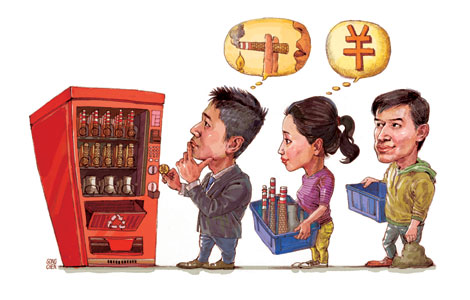Beware of the Detroit syndrome
Updated: 2013-07-30 09:41
By Sanjeev Sanyal (China Daily)
|
|||||||||||
But recent studies have shown that this source of innovation is rapidly decelerating (the productivity of an American research worker may now be less than 15 percent of a similar researcher in 1950). Instead, innovation is increasingly based on mixing and matching knowledge from different specializations. Certain cities are ideally suited for this, because they concentrate different kinds of human capital and encourage random interactions between people with different knowledge and skills.
The problem with this post-industrial urban model is that it strongly favors generalist cities that can cluster different kinds of soft and hard amenities and human capital. Indeed, the growth dynamic can be so strong for some successful cities that they can hollow out smaller rivals (for example, London vis-a-vis the cities of northern England).
Some specialist cities could also do well in this world. But, as Detroit, with its long dependence on the automotive industry, demonstrates, cities that are dependent on a single industry or on a temporary location advantage may fare extremely poorly.
All of this has important implications for emerging economies. As it transformed itself into the "factory of the world", the share of China's urban population jumped from 26.4 percent in 1990 to about 53 percent today. The big, cosmopolitan cities of Beijing and Shanghai have grown dramatically, but the bulk of the urban migration has been to cookie-cutter small and medium-sized industrial towns that have mushroomed over the last decade. By clustering industrial infrastructure and using the hukou system of city-specific residency permits, the authorities have been able to control the process surprisingly well.
This process of urban growth, however, is about to unravel. As China shifts its economic model away from heavy infrastructure investment and bulk manufacturing, many of these small industrial cities will lose their core industry. This will happen at a time when the country's skewed demographics causes the workforce to shrink and the flow of migration from rural areas to cities to slow (the rural population now disproportionately comprises the elderly).
The post-industrial attractions of cities like Shanghai and Beijing will draw the more talented and better-educated children of today's industrial workers. Unlike rural migrants heading for industrial jobs, it will be much more difficult to guide educated and creative professionals using the hukou (house registration) system. The boom in the successful cities, therefore, will hollow out human capital from less attractive industrial hubs, which will then fall into a vicious cycle of decay and falling productivity.
Stories like Detroit's have played out several times in developed countries during the last half century. And, as the fate of Mexico's northern towns suggests, emerging economies are not immune from this process.
That is why China needs to prepare for this moment. Rather than building ever more cookie-cutter industrial towns, China needs to refit and upgrade its existing cities. As its population begins to shrink, it may even be worthwhile to shut down unviable cities and consolidate. Detroit's fate should serve as a warning, not only for China, but for the next generation of urbanizing countries (for example, India) as well.
The author is Deutsche Bank's global strategist.
Project Syndicate
Related Stories
China's cities should learn from Detroit's bankruptcy 2013-07-23 19:19
Detroit suffers from US political system 2013-07-29 20:21
Detroit: A magnet for China's auto industry 2013-07-26 12:23
Detroit: Gold mine for China 2013-07-30 08:11
Today's Top News
FM welcomes deal with EU on solar panel dispute
Major SOEs eye profits from abroad
Train collision injures dozens in Switzerland
7-year-old 'brain dead' after swimming lesson
Families of crash victims to sue Asiana in the US
Open investigations urged after killings
Families looking to adopt turn to website
Sino-Japanese summit ruled out
Hot Topics
Lunar probe , China growth forecasts, Emission rules get tougher, China seen through 'colored lens', International board,
Editor's Picks

|

|

|

|

|

|





